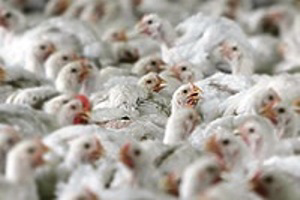Feedlogic launches platform for livestock sites

Feedlogic Corporation, a US supplier of intelligent solutions for livestock production, has launched MyFarm, a new Internet-based open platform for collecting and managing data from livestock production sites and feed mills.
MyFarm is a flexible, user-friendly system which allows multiple users in the livestock production supply chain to access the data they need to manage their operations more efficiently. It is built in a way which allows many other applications to work with it.
“By using an Internet cloud-based platform, we have created a simpler way of connecting people with the information they need,” said Drew Ryder, Feedlogic president. “Our customers have asked us for actionable data at a reasonable cost. We can deliver on that because our platform does not require customers and their suppliers to purchase proprietary software for multiple locations.”
MyFarm will initially have a number of applications related to feed management. It integrates with apps including:
• FeedMeter – an app from Feedlogic which allows real-time tracking of feed usage at production sites.
• FeedAlert – an app from Feedlogic which alerts users when there is a feed outage or when excessive feed usage is occurring.
• MyBin – an app from Feedlogic which tracks and manages feed inventories in bins on farm.
• Feed Allocation System (FAS) – an app from software company PrairiE Systems which manages feed budgets and feed ordering for swine production systems.
MyFarm automatically collects data from various sources at production sites and pushes the data to a cloud-based database. The MyFarm portal allows users to access a web portal to view, comment, and monitor on farm activity. MyFarm also offers a standard web service format enabling simple integration to proprietary software solutions and allowing fluid exchange of information.
“What makes MyFarm so powerful is its interactive characteristics and its potential to provide a more open exchange of data between companies,” said Ryder. “A lot of information in the livestock production and feed manufacturing sectors is currently stored on local servers using proprietary software or not entered into a computer at all. This creates “information silos” where data required by suppliers to fulfill orders is not easily available and adds unnecessary time to the ordering process.
“MyFarm can break down some these silos and reduce the lead time required in the ordering process. For feed manufacturers, this applies to both the downstream side – making the right amount of complete feed at the right time – as well as the upstream side – ordering the right amount of feed ingredients at the right time.”
A number of other apps for MyFarm are being planned as the platform is rolled out. These include applications which monitor water use, propane use, and electrical use at production sites. Each of these applications will be designed so that users can set their own thresholds for alerting and reporting.
According to Ryder, “The cost to store data in the cloud is low and will continue to get lower. We can add many more apps without taxing the system, allowing customisation at a much lower cost.
“No two livestock production or feed manufacturing operations are the same so they shouldn’t be stuck using the same software as everyone else. MyFarm will allow them to create and access the data that’s most pertinent to them based on their supply arrangements.”
 Beheer
Beheer




 WP Admin
WP Admin  Bewerk bericht
Bewerk bericht